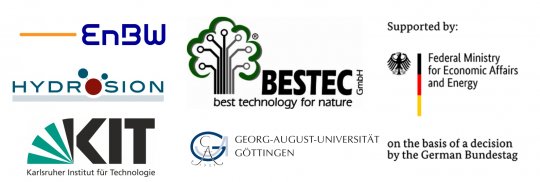Hello [simplenews-subscriber:field_first_name] [simplenews-subscriber:field_last_name],
we are pleased to send you the second issue of the UnLimited newsletter. In this edition you will find all vital information about the joint research project of the last three months.
We’re looking forward to your feedback and any questions. If you like the newsletter, feel free to forward it to your colleagues. You can easily subscribe to the newsletter at our Unlimited website.
Enjoy reading!
Best regards your
UnLimited Communication Team
Register now for the next Blickpunkt Geothermie webinar
In the next Blickpunkt Geothermie webinar (in German) on August, 20th, 2021 Prof. Dr. Jochen Kolb from KIT will give a presentation about the topic "Geothermalwasser als Metallressource: Beispiel Lithium". You can register for free on the Blickpunkt Geothermie site.
Webinar presentation available: “Lithium for batteries from geothermal waters in Germany – The joint UnLimited project”
On May 21th, 2021 Elif Kaymakci from EnBW Energie Baden-Württemberg AG gave a presentation within the framework of the IGC.events webinar on the topic of: “Lithium for batteries from geothermal waters in Germany – The joint UnLimited project.”
In her presentation, Elif Kaymakci addressed both the importance of lithium extraction from domestic resources for the local value chain as well as the specific issues and the scope of work content in the joint UnLimited project.
The presentation is now here available.
Exploring the source of lithium in the URG geothermal brines
The origin of lithium in deep geothermal waters in Germany is largely unknown to date but is an important variable in the sustainable yield of the resource. To minimize this gap of information, the UnLimited consortium will examine drill cuttings and surface analogs from the study sites in the Upper Rhine Graben (URG) and the North German Basin (NGB) with respect to their lithium content.
The aim of the investigations is to identify where the lithium in the geothermal brines potentially originates from. Therefore, a major and trace element analysis as well as a mineral specific element analysis will be performed. The selection of the solid samples as well as the evaluation of the data will be done by HYDROSION GmbH in cooperation with KIT, which will undertake the geochemical investigations. EnBW AG, as the operator of the Bruchsal geothermal site, will provide the sample material.
Isotope analyses: A useful tool for the identification of lithium sources
The investigation of specific isotope systems represents an important tool in clarifying the origin of lithium in the hot deep waters in Germany. Especially, isotopes of strontium, lithium, and boron play an important role.
The deep geothermal water in the Upper Rhine Graben is characterized by light lithium and boron isotope signatures, which are an order of magnitude below the corresponding marine signatures.
The study of the above-mentioned isotopic systems comprises a central position in UnLimited. Most of these analyses are performed by the scientists of the University of Göttingen.
Modeling the release processes of lithium in the subsurface
A team of modelers at University of Göttingen is currently working on the development of a suitable flow and transport model of a multi-porous and multi-scale fractured reservoir. This kind of hydrogeochemical models is using extensive databases of thermodynamic equilibria and mineral dissolution / precipitation reactions.
Reactive transport modeling is to be used to understand mechanisms that release lithium from the rock into the deep geothermal water at the Bruchsal study site. In the light of this information, statements about the exploitable number of resources and forecasts about long-term sustainable release rates of dissolved lithium can be generated.
Resources and Reserves: What are the differences?
Resources are deposits that cannot be exploited at a given time from an economic and technical point of view. Usually, resources are classified in three groups depending on the geological state of knowledge; inferred, indicated, and measured resources. Identified lithium global resources have increased remarkably in recent years owing to on-going exploration and are currently approximately 86 million tons in total and about 2.7 million tons for Germany (U.S. Geological Survey, 2021).
Reserves, on the other hand, represent the amount of an already developed raw material that can be economically extracted with the currently available technical technologies. It is often divided into two groups: the probable reserve and the assured reserve. The reserve is generally calculated by a mining company according to certain standards (e.g., JORC) and confirmed by an independent expert. Due to its dependence on the economic and technical situation, the reserve is a variable that only permits limited statements on raw material availability. There is currently no information on lithium reserves for the Upper Rhine Graben. The joint UnLimited project therefore aims at minimizing this knowledge gap.
Research on global lithium production
The lithium market situation and current technological developments - such as developments in the recycling of lithium-ion batteries or technical alternatives in a post-lithium phase are being searched. The focus of the research is on resources/reserves, production quantities and the specific production costs and thus the buildability (cut-off value). Data on the local environmental impact of lithium production and resource use - such as water consumption and energy use - are also collected and analyzed. The key data determined here will be an essential part of the Life Cycle Assessment.
